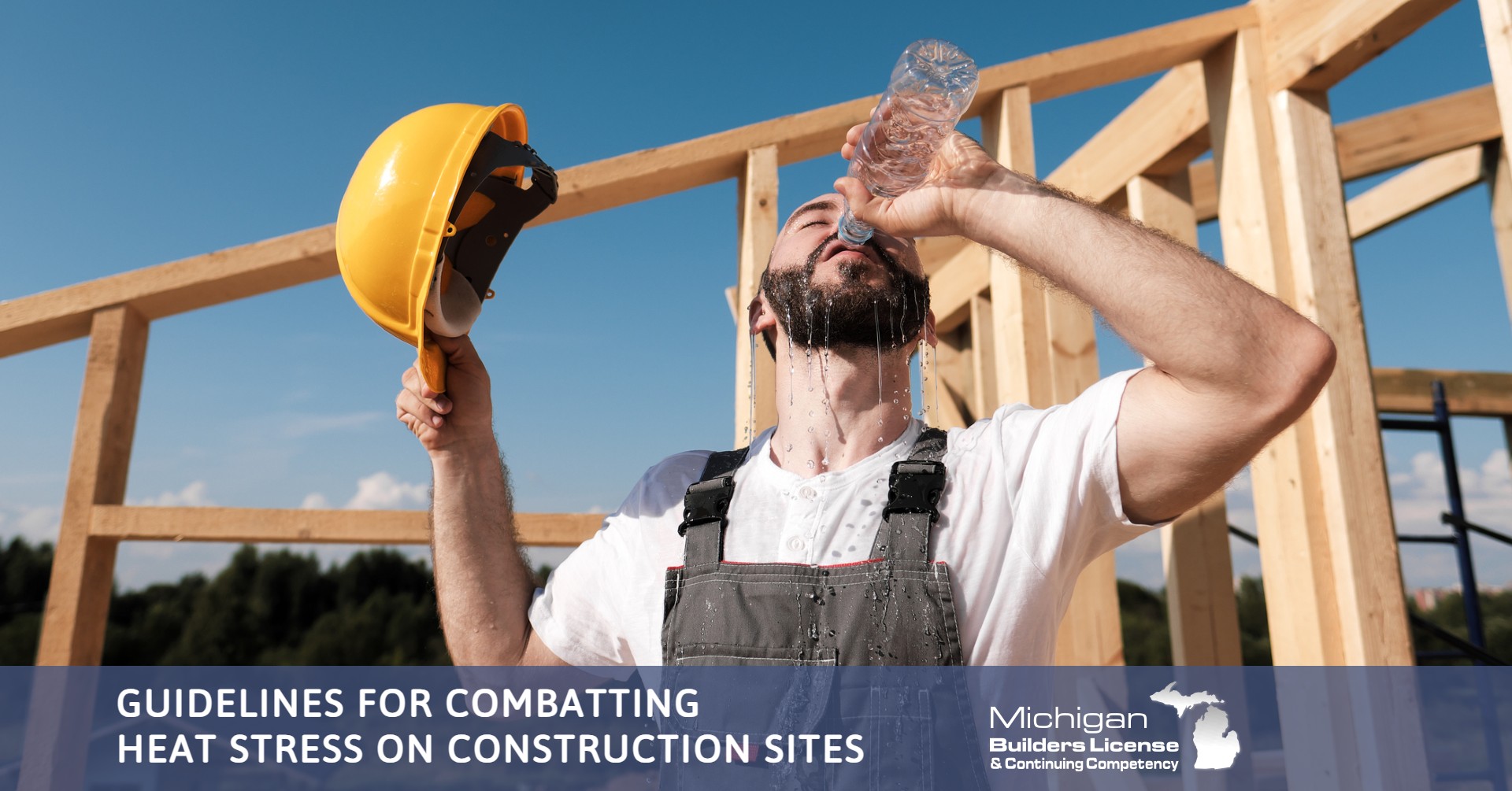As a Michigan builder, you know the challenges of extreme weather conditions, particularly during the hot summer months. Construction workers are at a higher risk of heat-related illnesses and injuries due to prolonged exposure to high temperatures and intense physical labor. Heat stress can not only jeopardize the health and safety of your workforce but also lead to project delays and reduced productivity. Therefore, it is essential to implement effective strategies to combat heat stress on construction sites. In this blog, we will explore some ways to help you safeguard your workers' well-being and maintain a productive work environment.
Training and Awareness
Education is the first line of defense against heat stress. Ensure that all workers receive comprehensive training on recognizing the signs and symptoms of heat-related illnesses, such as heat exhaustion and heatstroke. Encourage open communication about discomfort or early signs of heat stress and emphasize the importance of reporting these issues immediately to supervisors. Training should also cover the significance of staying hydrated and taking regular breaks in shaded or air-conditioned areas.
Monitor Weather Conditions
Stay informed about the weather forecasts daily, especially during the hot summer. When extreme heat is predicted, take necessary precautions in advance. Adjust work schedules, if possible, to avoid peak heat hours, typically between 10 a.m. and 4 p.m. Plan for additional breaks during these hours and plan more strenuous tasks for more excellent parts of the day.
Provide Ample Hydration
Encourage workers to stay hydrated throughout the day by providing cool, potable water access. Ensure water stations are readily available and conveniently located across the construction site. Remind employees to drink water frequently, even if they do not feel thirsty, as dehydration can occur rapidly in hot conditions.
Shade and Rest Areas
Create shaded rest areas on the construction site where workers can take breaks and cool down during downtime. Portable tents, canopies, or shaded trailers can provide relief from the sun's direct rays. Encourage workers to take short, frequent breaks to prevent excessive heat buildup.
Proper Attire
Appropriate work attire plays a crucial role in combatting heat stress. Advise workers to wear loose-fitting, breathable clothing made of lightweight materials to allow air circulation and aid in sweat evaporation. Hats with wide brims can help protect the face and neck from the sun, while sunglasses can safeguard the eyes from harmful UV rays.
Utilize Cooling Technologies
Consider using cooling technologies on-site to create a more comfortable working environment. Portable misting fans or cooling vests can significantly reduce body temperature and provide relief during hot days.
Job Rotation
Rotate workers between tasks that require varying levels of physical exertion. This practice allows employees to have breaks from intense labor, reducing their risk of heat stress and fatigue.
Medical Support
Ensure that a trained first-aid responder is always present on the construction site. Additionally, have a well-defined emergency action plan if a worker experiences severe heat-related symptoms, such as heatstroke.
Michigan's construction industry faces its fair share of challenges, particularly when combatting heat stress during scorching summer months. Implementing the abovementioned guidelines can significantly reduce the risk of heat-related illnesses among your workforce and maintain a safe and productive construction site. Remember that the health and safety of your workers should always remain a top priority, and together, we can build a safer and more efficient future for Michigan's construction industry.




